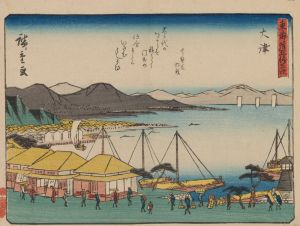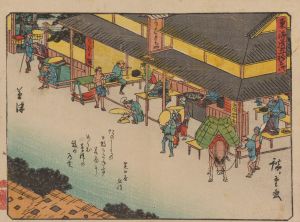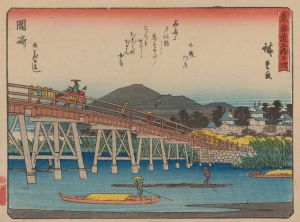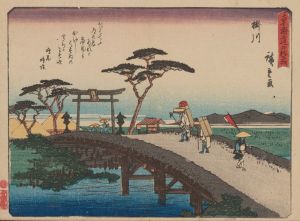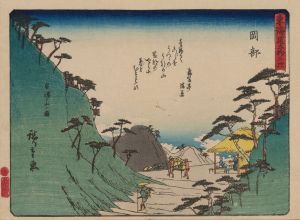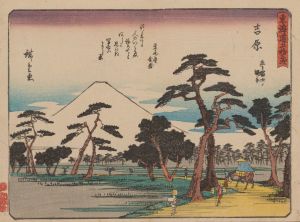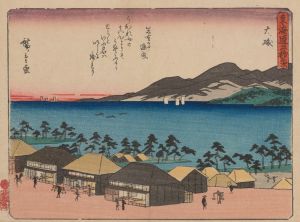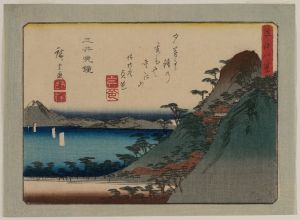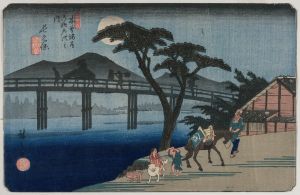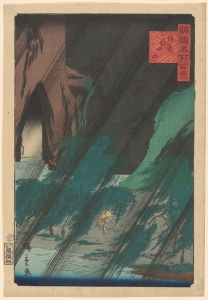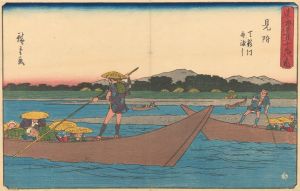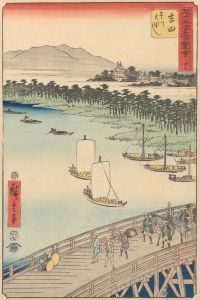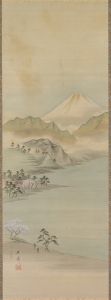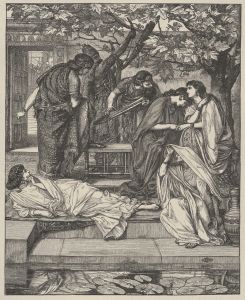
Tokaido gojusantsugi, Pl.43
A hand-painted replica of Andō Hiroshige’s masterpiece Tokaido gojusantsugi, Pl.43, meticulously crafted by professional artists to capture the true essence of the original. Each piece is created with museum-quality canvas and rare mineral pigments, carefully painted by experienced artists with delicate brushstrokes and rich, layered colors to perfectly recreate the texture of the original artwork. Unlike machine-printed reproductions, this hand-painted version brings the painting to life, infused with the artist’s emotions and skill in every stroke. Whether for personal collection or home decoration, it instantly elevates the artistic atmosphere of any space.
Andō Hiroshige, a renowned Japanese ukiyo-e artist of the Edo period, is celebrated for his landscape prints and depictions of the Tōkaidō, the road connecting Edo (modern-day Tokyo) to Kyoto. Among his most famous works is the series "The Fifty-three Stations of the Tōkaidō" (Tōkaidō Gojūsan-tsugi), which captures the scenic beauty and cultural significance of the various post stations along this historic route. Plate 43 of this series is one of these iconic prints, showcasing Hiroshige's masterful use of color, composition, and perspective.
The Tōkaidō road was the most important of the Five Routes of the Edo period, serving as a vital artery for travel and commerce. It was lined with 53 official post stations where travelers could rest and resupply. Hiroshige's series, created after his journey along the Tōkaidō in the early 1830s, offers a visual travelogue of these stations, each print capturing a unique aspect of the landscape or daily life.
Plate 43 specifically depicts the station of Kanbara, known for its picturesque snow scenes. Hiroshige's portrayal of Kanbara is particularly admired for its serene and tranquil atmosphere. The print features a snow-covered landscape, with gently falling snowflakes creating a sense of calm and quiet. In the foreground, travelers are depicted trudging through the snow, their figures slightly hunched against the cold, adding a human element to the otherwise still scene. The use of muted colors and delicate gradations of white and gray effectively convey the chill and beauty of a snowy night.
Hiroshige's ability to evoke emotion through his landscapes is evident in this print. The composition is carefully balanced, with the road leading the viewer's eye into the distance, where the silhouettes of mountains loom under the snow-laden sky. This sense of depth and perspective is a hallmark of Hiroshige's style, influenced by Western techniques that were gradually being introduced to Japan at the time.
The "Fifty-three Stations of the Tōkaidō" series was immensely popular upon its release and remains one of Hiroshige's most celebrated works. It not only showcases his artistic talent but also provides valuable insights into the culture and geography of Edo-period Japan. Each print in the series, including Plate 43, serves as a historical document, preserving the essence of a time when travel was both an adventure and a necessity.
Hiroshige's work has had a lasting impact on both Japanese and Western art. His innovative compositions and use of color influenced many Western artists, including the Impressionists, who admired his ability to capture the fleeting effects of light and weather. Today, Hiroshige's prints are held in high esteem, studied for their artistic merit and historical significance.
In summary, Plate 43 of "The Fifty-three Stations of the Tōkaidō" by Andō Hiroshige is a masterful depiction of the Kanbara station, capturing the serene beauty of a snowy landscape. Through his use of composition, color, and perspective, Hiroshige not only created a visually stunning piece but also offered a glimpse into the cultural and geographical landscape of 19th-century Japan.





